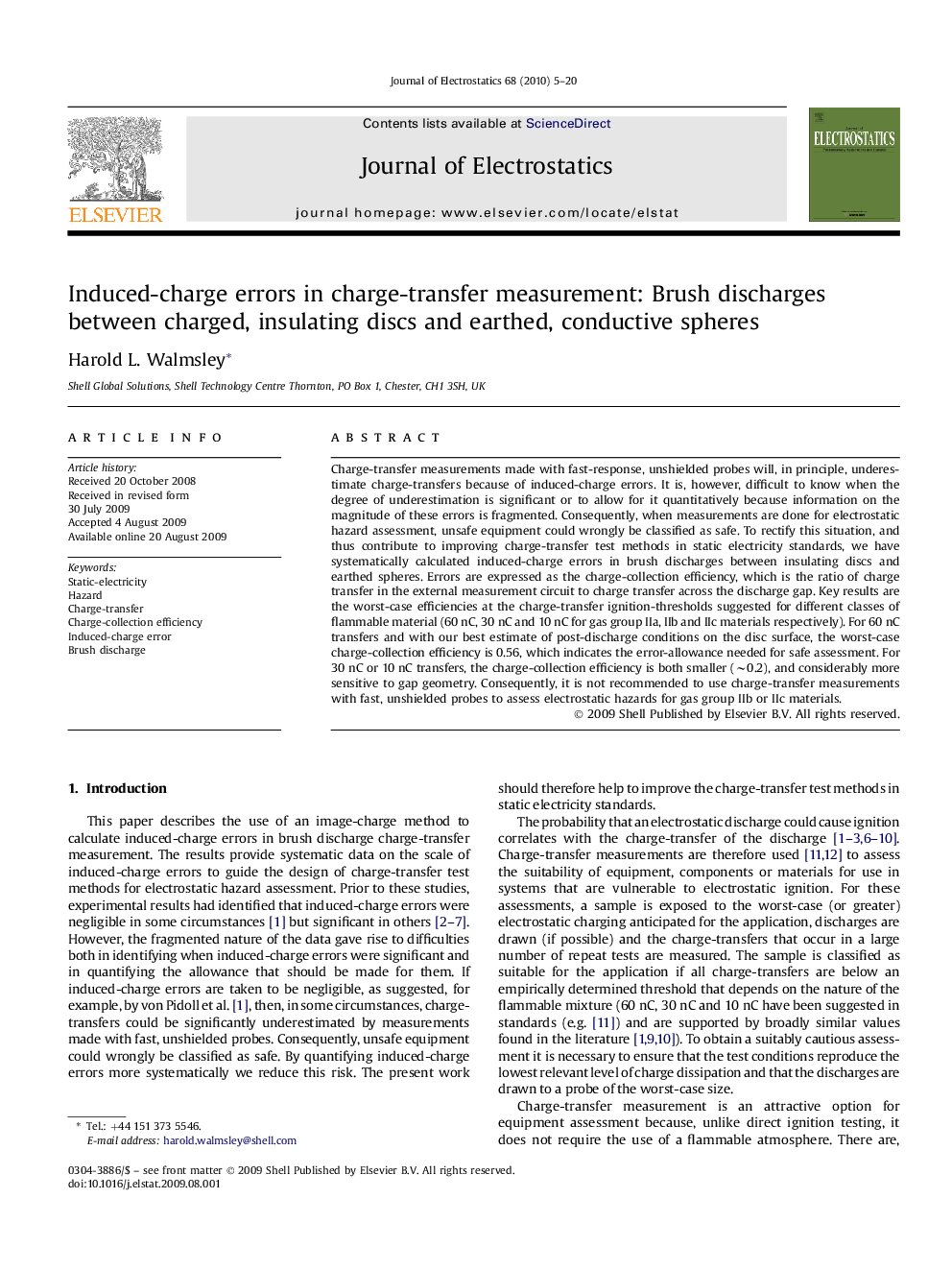| کد مقاله | کد نشریه | سال انتشار | مقاله انگلیسی | نسخه تمام متن |
|---|---|---|---|---|
| 725647 | 892546 | 2010 | 16 صفحه PDF | دانلود رایگان |

Charge-transfer measurements made with fast-response, unshielded probes will, in principle, underestimate charge-transfers because of induced-charge errors. It is, however, difficult to know when the degree of underestimation is significant or to allow for it quantitatively because information on the magnitude of these errors is fragmented. Consequently, when measurements are done for electrostatic hazard assessment, unsafe equipment could wrongly be classified as safe. To rectify this situation, and thus contribute to improving charge-transfer test methods in static electricity standards, we have systematically calculated induced-charge errors in brush discharges between insulating discs and earthed spheres. Errors are expressed as the charge-collection efficiency, which is the ratio of charge transfer in the external measurement circuit to charge transfer across the discharge gap. Key results are the worst-case efficiencies at the charge-transfer ignition-thresholds suggested for different classes of flammable material (60 nC, 30 nC and 10 nC for gas group IIa, IIb and IIc materials respectively). For 60 nC transfers and with our best estimate of post-discharge conditions on the disc surface, the worst-case charge-collection efficiency is 0.56, which indicates the error-allowance needed for safe assessment. For 30 nC or 10 nC transfers, the charge-collection efficiency is both smaller (∼0.2), and considerably more sensitive to gap geometry. Consequently, it is not recommended to use charge-transfer measurements with fast, unshielded probes to assess electrostatic hazards for gas group IIb or IIc materials.
Journal: Journal of Electrostatics - Volume 68, Issue 1, February 2010, Pages 5–20